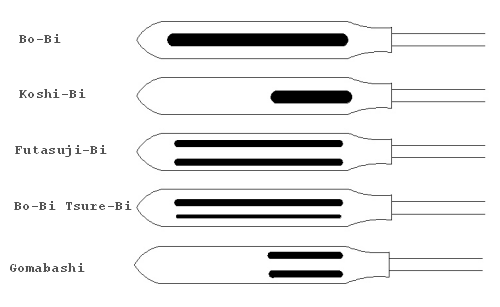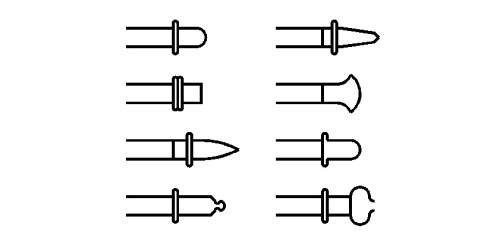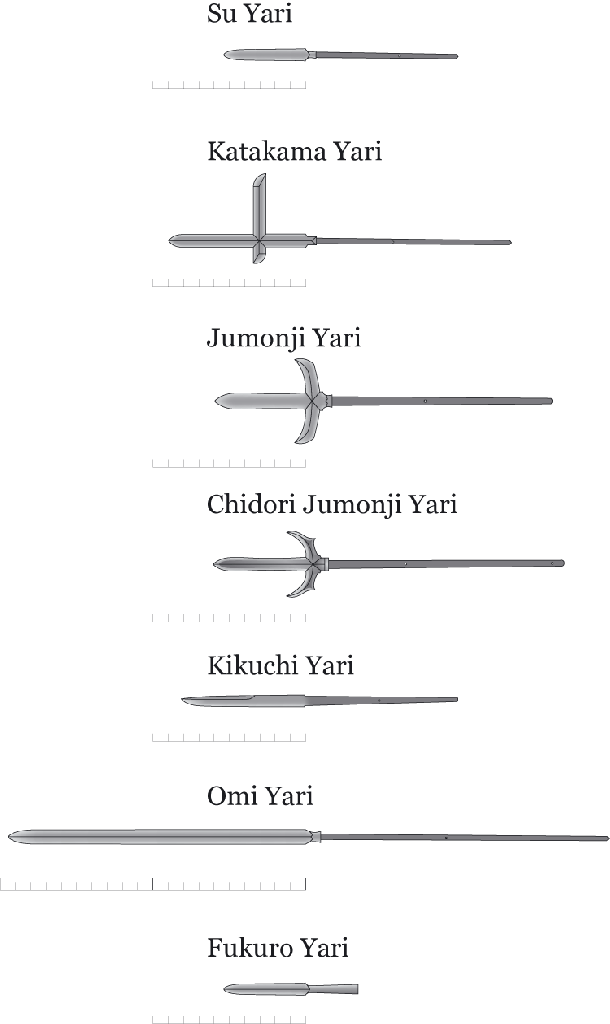The Japanese Yari
|
The Japanese yari first appeared in the
Kamakura period (14'th century). There are two groups of Japanese yari, the
Sankaku-yari and ryoshinogi-yari. There are over a dozen different main
types of yari, several of them are listed below. If a yari is long its
referred to as su-yari or omi-yari which is an alternative name. The tang on
a yari is as long as the blade itself. There would normally be one or two
mekugi-ana, one being near the blade and the other at the end of the tang.
Its common to find yari with a broken tang at the mekugi-ana (holes). The
kama-yari are a style with a cross bar. A common shape is the jumonji yari
which has side bars that are the same length. Several examples are shown
below. |
||||||||||||||||||
 |
||||||||||||||||||
|
||||||||||||||||||
| Yari Blades - There are several common types of blade shapes for Yari. The Hirasankaku yari is seen often, the width can often taper along the blade and the blade is wider than tall. This style of blade can bend easily and often has cracks (higari). Another popular style would be the Seisankaku yari which has a triangular shape. An unusual shape is the last one where the yari has the cross section of a sword but has a long tang like a pole arm.
|
||||||||||||||||||
|
||||||||||||||||||
| Kerakubi - The shoulder on a yari is required to keep the yari from pressing into the pole. This section shows several cross sectional areas of the shoulder area.
|
||||||||||||||||||
|
||||||||||||||||||
| Yari Hi - There are several types of grooves seen in Yari. Some are presented below and more can be located in the references below. It was common for the groove to not be polished and to have red lacquer within the groove. Grooves can appear on all sides of the blade, and its common to have one groove on each face. When there is Futasuji-bi, the groove are located close to the ridge line. When carvings are present they are usually within a single wide polished groove.
|
||||||||||||||||||
|
||||||||||||||||||
| Ishizuki - The end cap or Ishizuki of a Japanese Yari have many forms. A few of the shapes are shown below, please refer to the references for more styles. Many of the shapes have holes through them behind the rear ring. They usually have a hole to pin the piece onto the pole. The Ishizuki are usually made from iron.
|
||||||||||||||||||
|
||||||||||||||||||
| Yari Shapes -
Drawing courtesy of Valdek Laur,
http://nihonto.pri.ee
|
||||||||||||||||||
|
||||||||||||||||||
| Yari Saya -
|
||||||||||||||||||
|
||||||||||||||||||
References:
|





